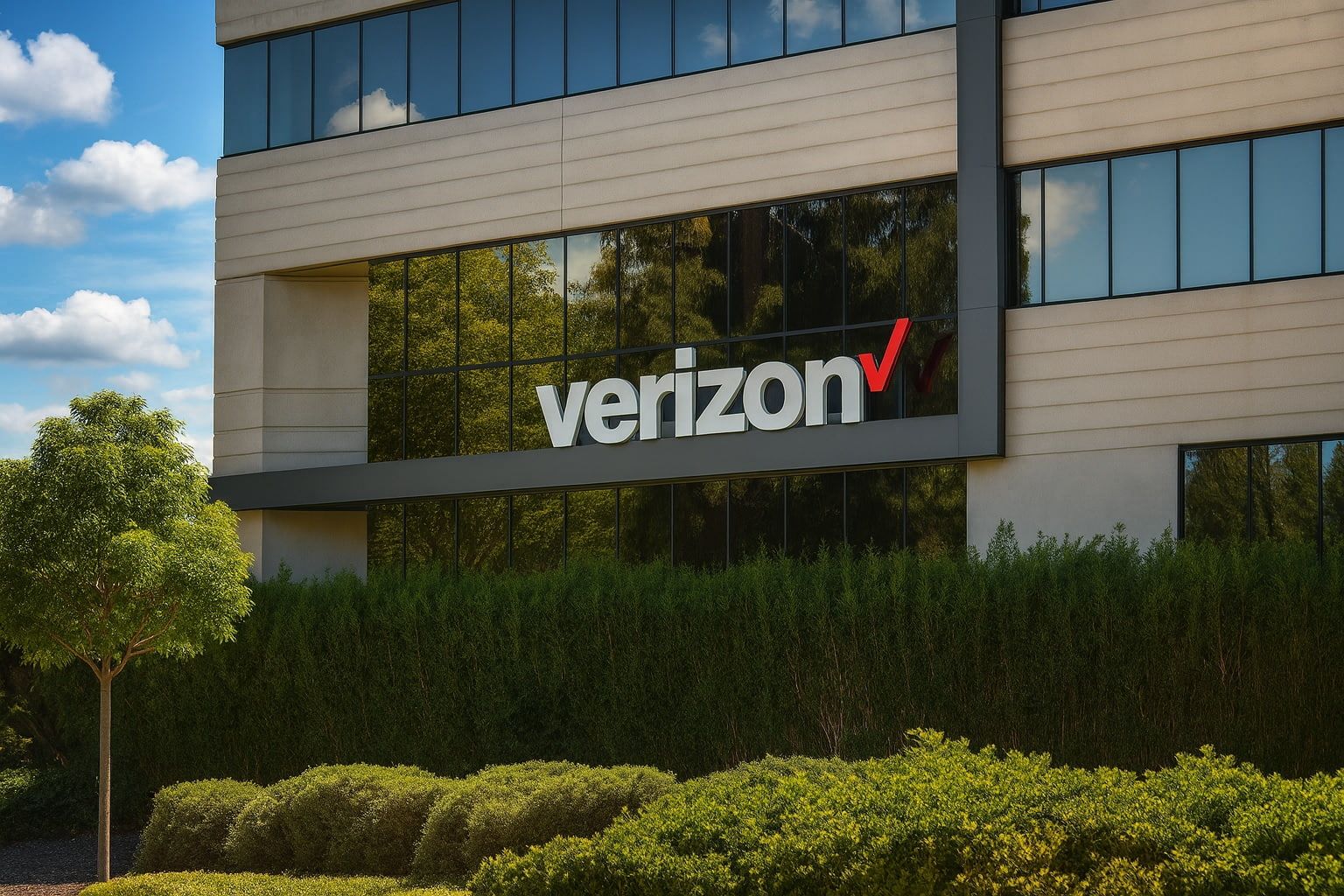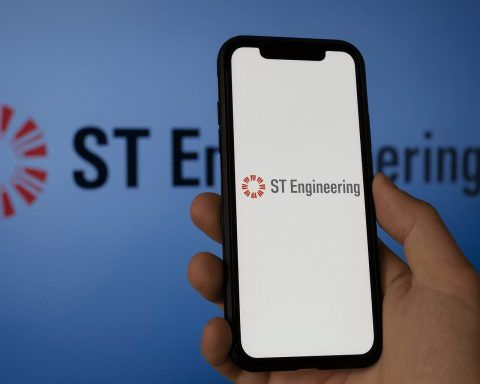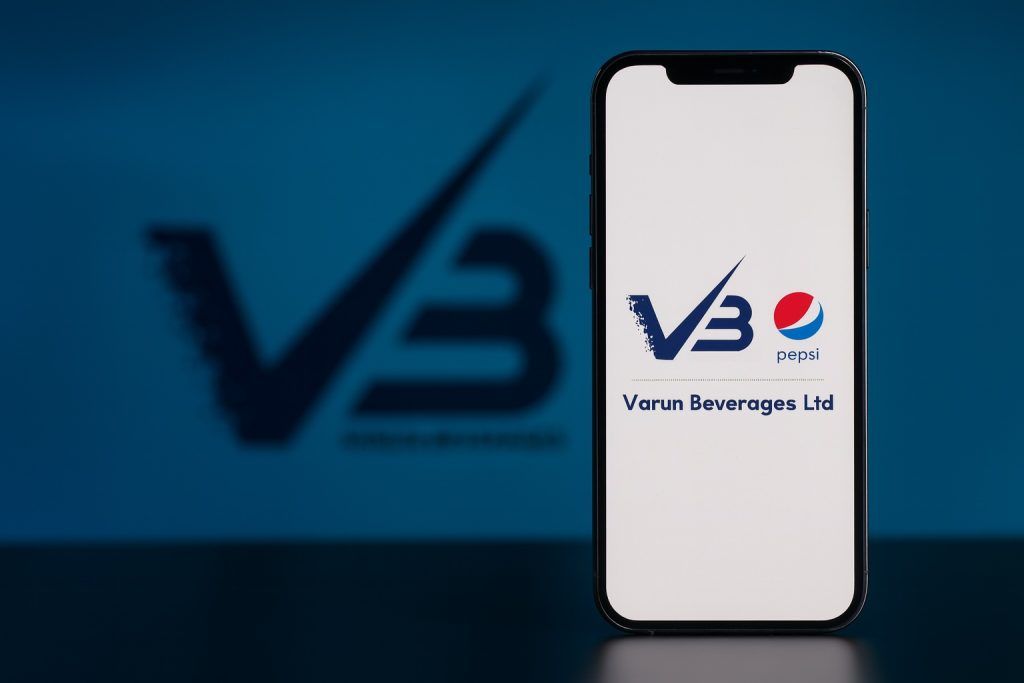- Earnings Beat Expectations: Verizon beat Q3 2025 profit forecasts with adjusted earnings of $1.21 per share (vs $1.19 expected) [1] [2]. Revenue came in at $33.8 billion, slightly below analyst estimates of ~$34.2 billion [3] [4], as modest growth in wireless service was offset by flat overall sales.
- Subscriber Growth Eases Fears: The carrier added 44,000 postpaid wireless subscribers in Q3, more than double the ~19,000 additions analysts forecast [5]. Aggressive iPhone promotions and Verizon’s new myPlan (with 3-year price guarantees) helped attract customers [6] [7], easing concerns that Verizon was losing ground to T-Mobile and cable rivals [8].
- New CEO & 5G/Fiber Investments: October brought a leadership shake-up, with former PayPal CEO Dan Schulman taking the helm at Verizon on Oct 6 [9]. Schulman is pushing major 5G and broadband moves – Verizon just announced a fiber partnership with Tillman’s Eaton Fiber to rapidly expand Fios internet into new markets beyond its footprint [10] [11], complementing its pending $20 billion Frontier fiber acquisition [12] [13] and the recent purchase of fixed-wireless provider Starry [14].
- Stock Slumped Then Rebounded:Verizon stock (NYSE: VZ) trades around $39–40 per share, after a ~10% drop in the month before earnings [15] due to a bearish analyst downgrade and broader telecom weakness. However, shares popped higher this week on the strong subscriber news and the new fiber deal. At ~$39.3, Verizon is down ~8% over three months [16] and yields nearly 7% annually, reflecting its recent dividend hike (19th straight year of increases) [17].
- Analysts Cautiously Optimistic: Wall Street remains mixed but slightly positive. TipRanks reports a Moderate Buy consensus (5 Buys, 9 Holds) with an average price target around $48–$49 – about 20–22% above current levels [18]. Many see Verizon as undervalued at ~10× forward P/E (peers ~17×) [19] [20], and Simply Wall St’s model even pegs fair value north of $100 [21]. But others urge caution given Verizon’s heavy debt load and modest growth outlook, keeping some analysts in “hold” camp despite the 5G potential.
Q3 2025 Earnings – Profits Up, Sales Flat but Subscribers Impress
Verizon’s third-quarter results delivered a mixed bag, topping profit expectations while coming in just shy on revenue. Adjusted earnings of $1.21 per share beat consensus by $0.02 [22], even as revenue of $33.8 billion (about 3% year-over-year growth) was a tad below the ~$34.2 billion anticipated [23] [24]. This marks a return to bottom-line outperformance for the telecom giant, which had missed revenue targets in several recent quarters. Cost controls and stable wireless service margins likely aided the EPS beat. Verizon also reaffirmed its full-year outlook, maintaining guidance for earnings and roughly $19.5–20.5 billion in free cash flow [25] [26], while noting capital spending will be within or even below its $17.5–18.5 billion plan [27]. Keeping capex in check is a positive sign to investors that big 5G network builds are winding down to more efficient levels.
What truly grabbed headlines was subscriber growth. Verizon added 44,000 postpaid wireless subscribers in Q3, handily beating analyst expectations (~19k adds) [28]. This number, while modest, is significant because Verizon had struggled with subscriber losses in prior periods amid fierce competition. Management credited an “active switcher” wireless market in September – fueled by the latest iPhone 15 launches – and Verizon’s aggressive promotions for the upside [29] [30]. All major carriers rolled out hefty device trade-in deals and discounts to lure customers during Apple’s release. Verizon’s approach paid off: its customizable myPlan offerings (which let users pick perks and lock in prices for three years) proved popular and helped retention [31]. The result could “ease investor concerns that Verizon is losing ground to rivals T-Mobile and low-cost cable providers,” Reuters noted [32]. In fact, Verizon’s wireless retail postpaid base is now seeing healthier engagement – over 18% of its mobile customers also take a Verizon broadband product (Fios or 5G Home), a cross-selling stat the company highlighted [33].
On the wireline side, the story was less upbeat. Total revenue was flat largely due to ongoing declines in business wireline services and legacy landlines. This mirrored trends at AT&T, which saw its own business wireline revenue fall in Q3 [34]. Verizon’s consumer broadband, however, got a boost from fixed wireless access (FWA) additions and steady Fios fiber adds. The company has leaned into 5G FWA home internet as an alternative to cable, and that segment’s growth likely contributed to the broadband subscriber gains noted by CEO Dan Schulman during the earnings call (detailed figures weren’t immediately provided in the snapshot).
Investors reacted cautiously optimistically to the report. Verizon’s stock rose in pre-market trading on Oct 29 after the numbers came out, reflecting relief that subscriber trends are improving. By beating on earnings and matching its own forecasts, Verizon showed it can deliver in a tough environment – a welcome surprise after peer AT&T’s lukewarm quarter. AT&T had reported just 1.6% revenue growth and a 10% drop in EPS as it chased lower-value customers [35], and its stock fell ~5% post-earnings [36]. Verizon managed to avoid that fate this quarter, thanks to tighter cost discipline and focus on higher-quality subscriber adds.
New CEO’s Bold Moves: 5G, Fiber and a Strategy Shift
This earnings report was also the first under Verizon’s new CEO, Dan Schulman, who took over from Hans Vestberg earlier in the month. Schulman, a Verizon board member and former PayPal chief, was a surprise pick announced on Oct 6 – a move that initially jolted the stock (VZ fell ~3% on the news) [37]. Vestberg’s exit after 5 years signaled urgency from the board to reinvigorate growth. Schulman has wasted no time in making bold strategic bets, especially in the realm of 5G and fiber broadband expansion.
In the weeks around the CEO transition, Verizon unveiled a flurry of initiatives aimed at strengthening its network and service portfolio:
- Massive Fiber Expansion via Tillman: Just days ago, Verizon announced a new fiber build partnership with Tillman Global’s affiliate, Eaton Fiber [38]. This deal will see Eaton Fiber deploy high-speed fiber-optic networks in areas outside Verizon’s current Fios footprint, effectively allowing Verizon to enter new markets quickly without bearing the full build cost [39] [40]. “This agreement allows us to rapidly enter new markets, accelerate deployment and ensure we capture growth opportunities across the country,” said Verizon Consumer CEO Sowmyanarayan Sampath [41]. Under the deal, Eaton Fiber will fund and construct the networks, while Verizon will exclusively offer retail internet service over them during the build-out [42]. The arrangement is a win-win: Verizon expands its broadband reach (and can bundle more customers onto wireless + home internet plans) with minimal capital outlay, and Tillman gains a guaranteed customer for its fiber. Analysts note this could “complement Verizon’s ongoing fiber builds and planned acquisition of Frontier” [43] – meaning Verizon’s $20 billion buyout of Frontier Communications. That acquisition, announced in 2024, was approved by regulators in May 2025 and is set to close by early 2026 [44] [45]. Once finalized, Verizon will absorb Frontier’s 2.2 million fiber subscribers and vast rural fiber network, dramatically extending Fios coverage [46]. Combining the Frontier footprint with the new Eaton Fiber markets could give Verizon a much larger national broadband presence, targeting cable competitors in areas it’s never served before.
- 5G and Fixed Wireless Push: Verizon continues to double down on 5G wireless investments to maintain network leadership. It spent over $45 billion on mid-band C-Band spectrum licenses in 2021 and has been building thousands of 5G cell sites. While this heavy spending raised debt, it’s now starting to pay off in capacity and new services. One area of growth is Fixed Wireless Access (FWA) – essentially 5G-powered home internet. Verizon’s 5G Home and LTE Home offerings have signed up millions of customers, and the acquisition of Starry (a smaller 5G FWA provider) in Oct 2025 will double Verizon’s fixed wireless customer base to ~8–9 million in coming years [47]. Verizon is leveraging Starry’s tech to reach urban apartments and dense areas with quick, wireless broadband instead of laying cable [48]. Together with the fiber expansions, these moves underscore Verizon’s strategy of “network convergence” – using both fiber and 5G wireless to deliver broadband and increase its subscriber footprint. “Our strategy is clear: lead the market in premium mobility and broadband convergence, and fiber is the foundation of that leadership,” Sampath explained [49]. Schulman echoed similar ambitions internally, reportedly telling employees “we must drive financial results that exceed current market expectations” as Verizon invests in next-gen networks [50].
- Network Innovation and Partnerships: Beyond consumer services, Verizon is also pursuing innovative 5G applications. Its Verizon Business unit has been deploying private 5G networks for enterprise and government clients – for example, outfitting UK’s Thames Freeport with 5G for smart logistics earlier this year [51]. Verizon is exploring network slicing (dedicated 5G lanes for critical services) and edge computing solutions for enterprise IoT. And notably, Verizon inked a deal in October with satellite startup AST SpaceMobile to eventually beam cellular service directly from satellites to phones, aiming to eliminate dead zones [52]. While that “space cell” tech is nascent, it shows Verizon is preparing for a future where satellite, fiber and 5G all blend to provide ubiquitous connectivity [53]. Such initiatives could open new revenue streams (e.g. global roaming via satellite) and keep Verizon competitive as rivals like T-Mobile partner with SpaceX’s Starlink on similar aims [54] [55].
Internally, Schulman is also expected to focus on customer experience and cost efficiency. Verizon has a reputation for top network quality but has fallen behind T-Mobile in subscriber growth partly due to pricing and customer service perceptions. The new CEO may shake up marketing and plans (some analysts speculate more simplified plans or multi-service bundles could come). Verizon did raise prices on certain older wireless plans in 2023–24, which boosted revenue but may have caused some customer churn; now the company is balancing price discipline with competitive offers like free streaming service bundles to add value. Schulman’s tenure will likely prioritize regaining customer momentum while monetizing Verizon’s huge 5G investment – a challenging balancing act, but Q3’s encouraging subscriber uptick is a step in the right direction.
Competitive Landscape: How Verizon Stacks Up Against AT&T and T-Mobile
Verizon’s Q3 arrives on the heels of mixed results from its two main rivals, AT&T and T-Mobile US, which reported earlier in October:
- T-Mobile: The #2 carrier (by subscribers) continues to set the pace on growth. In Q3, T-Mobile posted a 9% surge in revenue to $21.96 billion, beating Wall Street’s forecast by about $500 million [56]. It also delivered a slight EPS beat at $2.41 [57]. Most impressively, T-Mobile logged what it called “best in industry” subscriber growth across postpaid phone, broadband, and even its new fiber pilot program [58]. T-Mobile added 850,000 postpaid phone net adds (according to its release) – dwarfing Verizon’s 44k – plus continued strong sign-ups for its 5G Home Internet. The market rewarded T-Mobile for these metrics; its stock jumped after results, and the Magenta carrier has been steadily gaining share. Notably, T-Mobile is also undergoing a leadership transition: CEO Mike Sievert is set to hand the reins to insider Srini Gopalan on Nov 1 [59]. The incoming CEO inherits a company that has largely completed its Sprint merger integration and is now pushing into new arenas (like satellite-phone service via SpaceX and fiber broadband trials) [60]. Verizon, in contrast, has a larger legacy business to manage, but also boasts a more extensive network asset portfolio (especially after its spectrum spends).
- AT&T: The Dallas-based telecom reported a cautiously steady Q3. AT&T saw 1.6% revenue growth (to $30.7 B) – essentially in line with expectations [61]. Its adjusted EPS of $0.54 met estimates, though it was down from $0.60 a year prior [62], reflecting higher interest costs and some dilution. AT&T highlighted “strong growth in broadband, mobility and consumer wireline” segments [63]. Indeed, AT&T has been bundling fiber internet with wireless plans to good effect, adding hundreds of thousands of fiber subscribers. However, the company acknowledged softness in its business wireline unit and some ARPU (average revenue per user) dilution as it chased customer additions in “underpenetrated” low-price markets [64]. AT&T even offered promotional discounts (like cheap phone plans for bundlers), which, while boosting subscriber counts, dented wireless ARPU [65]. This strategy of trading ARPU for volume is one Verizon has been more reluctant to follow. Verizon’s approach under Vestberg (and likely Schulman) emphasizes profit per user and premium network quality over sheer volume – hence Verizon’s higher ARPU but lower recent growth. That said, AT&T’s stock had been outperforming Verizon’s for much of 2025 (AT&T was up ~23% year-on-year vs Verizon’s ~–5% by mid-October) [66], perhaps due to AT&T’s more upbeat narrative on subscriber gains and its big push into fiber (AT&T is buying fiber assets from Lumen for $5.7 B to expand further [67]). With Verizon now making its own big fiber moves (Frontier, Eaton Fiber) and stabilizing its wireless base, the gap between the two could narrow.
- Cable & Others: Both Verizon and AT&T are contending with an unconventional “competitor” – cable companies like Comcast and Charter. These cable operators resell wireless service (as Mobile Virtual Network Operators) using Verizon’s network, often at cut-rate prices bundled with home internet. Their mobile subscriber counts have grown rapidly, effectively “siphoning” some would-be customers from the Big Three carriers [68]. Verizon’s strategy to counter this has two prongs: get some revenue back by wholesaling to cable (it earns wholesale fees from those MVNO deals), and simultaneously expand Fios fiber and fixed wireless to steal broadband customers from cable. The pending Frontier deal is partly aimed at exactly that – reclaiming broadband share in areas where cable had been dominant [69]. Meanwhile, in the emerging satellite realm, Verizon has taken a stake in AST SpaceMobile and is monitoring SpaceX/Starlink’s foray into direct-to-phone service [70]. Verizon and AT&T even petitioned the FCC to limit high-power satellite broadcasts, citing interference concerns [71]. Clearly, the competitive field is no longer just the old wireless trio – it spans fiber, cable, and space. Verizon’s large-scale investments in spectrum, fiber, and partnerships suggest it’s preparing to battle on all fronts.
In summary, Verizon now appears to be playing offense after a period of playing defense. T-Mobile still leads on growth metrics, and AT&T has shored up its base, but Verizon’s latest moves (and Q3 results) show it’s not conceding anything. “Verizon must contend with aggressive pricing and new tech from T-Mobile, fiber builds by AT&T, and cable bundles, even as it leverages its industry-leading spectrum assets,” noted TechStock² analysts in a recent industry review [72]. The competitive pressure will remain intense heading into 2026, but Verizon is finally taking some swings of its own.
Outlook: Is Verizon a Bargain or a Bust?
With the stock languishing and yields high, Verizon presents a classic debate for investors: value opportunity or value trap? Here’s what the outlook seems to be, based on current trends and expert views:
- Financial Forecasts: Verizon’s reaffirmed guidance suggests 2025 will finish on solid footing, with free cash flow around $20 billion (enough to cover its $11 B annual dividend comfortably) and stable earnings. Analysts expect only minimal earnings growth in the near term – Zacks consensus pegs full-year EPS around $4.70 (virtually flat) and a modest uptick next year [73]. Verizon’s huge 5G and fiber investments are long-term plays; depreciation and interest costs are weighing on profits now, but those investments could yield stronger returns in later years (through new subscribers and services). The company’s decision to raise its dividend by 1.8% in September shows management’s confidence in future cash flows [74]. Verizon has now increased its dividend for 19 consecutive years, and at the current stock price the yield is about 6.5–7%, one of the highest among S&P 500 companies [75]. That payout provides a cushion for investors paid to wait for a turnaround. Importantly, Verizon’s balance sheet, while debt-heavy (~$150 B gross debt), is deemed manageable – Fitch rates Verizon A– with a stable outlook [76], citing its reliable cash generation and the expectation that post-5G-spending, debt will be gradually paid down.
- Valuation Upside: By many measures, Verizon stock looks cheap. It trades at roughly 9–10× forward earnings, a steep discount to the broader market and even below AT&T (~11×) and T-Mobile (~20×) valuations [77] [78]. The telecom sector’s average P/E is ~16–17×, so Verizon appears undervalued relative to peers [79]. Simply Wall St’s algorithms give Verizon a *“perfect 6/6” score on undervaluation checks, and their DCF (discounted cash flow) model infers an intrinsic value around $105–106 per share – over 60% above the current price [80] [81]. Even acknowledging that such models are optimistic, there’s a clear argument that Verizon is underpriced given its assets and earnings power. The dividend yield near 7% further signals that investors are very pessimistic on growth – often a contrarian opportunity for long-term value investors. As The Motley Fool quipped recently, Verizon is “back in focus for income seekers” at these levels, with its stable business and rich yield [82].
- Wall Street Sentiment: Analyst opinions on Verizon have warmed slightly but remain mixed. According to TipRanks, 14 analysts over the past 3 months rate VZ a Moderate Buy (5 Buys, 9 Holds, 0 Sell) [83]. The average price target is ~$48 [84], implying ~20% upside, though targets range from the low $40s up to the mid-$50s. In the last couple of weeks, some analysts actually raised their targets – for instance, RBC Capital moved to $46 (Sector Perform rating) citing stronger free cash flow and cost efficiencies ahead [85], and JPMorgan reiterated confidence with a $49 target [86]. Even the more bullish houses like Goldman Sachs (Buy, ~$52 target) see limited near-term upside, but decent longer-term reward [87]. Notably, virtually no one on the Street has a Sell on Verizon right now [88] – likely because the stock’s valuation and yield already reflect a lot of the bad news. The downside appears relatively buffered unless the fundamental picture deteriorates again.
- Risks and Catalysts: Verizon still faces challenges. High debt and interest rates can constrain its financial flexibility, and the competitive price war in wireless shows no signs of abating – which could pressure margins if Verizon is forced to discount more. The new CEO Schulman has to prove he can rejuvenate growth; his track record at PayPal was impressive, but telecom is a different ballgame. Execution on the big fiber expansion will be critical – Verizon needs the Frontier takeover and the Eaton Fiber rollout to go smoothly to justify those investments. Additionally, any hiccups in network quality (for example, delays in 5G deployment or unexpected outages) could hurt its premium brand image. On the flip side, Verizon has some potential catalysts: faster-than-expected 5G adoption (e.g. revenue from new 5G enterprise or IoT services), successful bundling of wireless with home internet (increasing customer lifetime value), and even the possibility of asset sales or spin-offs to unlock value (some analysts have floated that Verizon could monetize stakes in cell towers or media assets, or that it might slow capex dramatically post-2025, boosting free cash flow). If Verizon can string together a few quarters of subscriber growth and maintain its earnings, sentiment could improve markedly.
For now, Verizon appears to be stabilizing and positioning for a comeback story in 2026 and beyond. The stock’s slump this year – it fell about 10% from its early October highs into the earnings, even touching multi-year lows around $37 – may well have been an overreaction. “Is Verizon a bargain after [this] 10% drop?” asked Simply Wall St in an analysis just before earnings [89]. The answer from value hunters is leaning yes: Verizon’s low valuation and hefty dividend make it attractive if you believe its 5G and fiber bets will eventually pay off. That said, the company needs to execute under its new leadership to convert these investments into renewed growth. In the near term, Verizon’s Q3 wins on subscribers and its steady finances are encouraging signs. If Dan Schulman can build on this momentum – driving better customer additions while keeping costs in check – Verizon may finally turn the corner and reward patient investors. As the 5G era progresses, Verizon’s vast network could yet prove to be a sleeping giant in the telecom race. The next few quarters will be crucial to watch, but for now, this telecom titan just gave Wall Street a reason to pay attention again [90] [91].
Sources: Verizon Q3 2025 earnings release and call; Reuters [92] [93]; Associated Press [94] [95]; TechStock² (TS2.tech) analysis [96] [97]; Simply Wall St [98] [99]; TipRanks [100] [101]; Verizon press release [102] [103]; Yahoo Finance/Investing.com [104] [105]; Company statements.
References
1. www.seattlepi.com, 2. www.reuters.com, 3. www.seattlepi.com, 4. www.investing.com, 5. www.reuters.com, 6. www.reuters.com, 7. www.reuters.com, 8. www.reuters.com, 9. ts2.tech, 10. www.verizon.com, 11. www.verizon.com, 12. ts2.tech, 13. ts2.tech, 14. ts2.tech, 15. simplywall.st, 16. www.investing.com, 17. ts2.tech, 18. www.tipranks.com, 19. ts2.tech, 20. ts2.tech, 21. simplywall.st, 22. www.seattlepi.com, 23. www.seattlepi.com, 24. www.investing.com, 25. ts2.tech, 26. www.reuters.com, 27. www.reuters.com, 28. www.reuters.com, 29. www.reuters.com, 30. www.reuters.com, 31. www.reuters.com, 32. www.reuters.com, 33. www.reuters.com, 34. www.tipranks.com, 35. www.tipranks.com, 36. finviz.com, 37. ts2.tech, 38. www.verizon.com, 39. www.verizon.com, 40. www.verizon.com, 41. www.verizon.com, 42. www.verizon.com, 43. www.verizon.com, 44. ts2.tech, 45. ts2.tech, 46. ts2.tech, 47. ts2.tech, 48. ts2.tech, 49. www.verizon.com, 50. ts2.tech, 51. ts2.tech, 52. ts2.tech, 53. ts2.tech, 54. ts2.tech, 55. ts2.tech, 56. www.tipranks.com, 57. www.tipranks.com, 58. www.tipranks.com, 59. ts2.tech, 60. ts2.tech, 61. www.tipranks.com, 62. www.tipranks.com, 63. www.tipranks.com, 64. www.tipranks.com, 65. www.tipranks.com, 66. ts2.tech, 67. ts2.tech, 68. ts2.tech, 69. ts2.tech, 70. ts2.tech, 71. ts2.tech, 72. ts2.tech, 73. ts2.tech, 74. ts2.tech, 75. ts2.tech, 76. ts2.tech, 77. ts2.tech, 78. simplywall.st, 79. ts2.tech, 80. simplywall.st, 81. simplywall.st, 82. emma-app.com, 83. www.tipranks.com, 84. www.tipranks.com, 85. ts2.tech, 86. ts2.tech, 87. ts2.tech, 88. ts2.tech, 89. simplywall.st, 90. www.reuters.com, 91. www.tipranks.com, 92. www.reuters.com, 93. www.reuters.com, 94. www.seattlepi.com, 95. www.seattlepi.com, 96. ts2.tech, 97. ts2.tech, 98. simplywall.st, 99. simplywall.st, 100. www.tipranks.com, 101. www.tipranks.com, 102. www.verizon.com, 103. www.verizon.com, 104. www.investing.com, 105. www.investing.com








